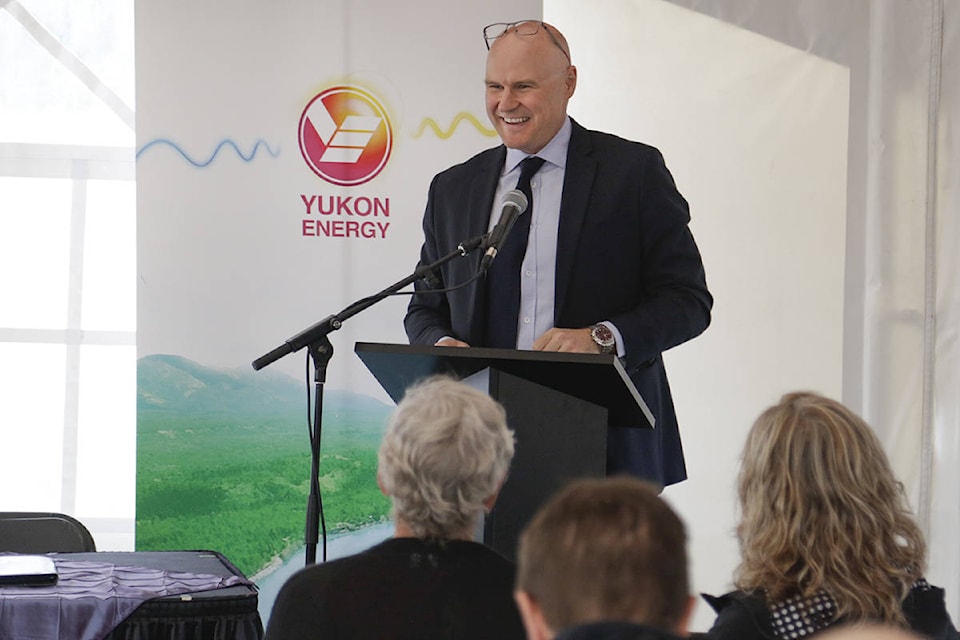Victoria Gold’s Eagle mine near Mayo is expected to spend at least $100 million on power over the first 10 years of its life.
On Nov. 10 Yukon Energy and Victoria Gold signed a power purchase agreement detailing how the mine will get power from the grid. The agreement has been submitted to the Yukon Utilities Board which will have the final say, likely sometime in the new year.
According to Yukon Energy, Victoria Gold has agreed to cover the full cost of connecting to the main power line and most of the costs of a new substation.
The Eagle mine is expected to go into production by mid-2019, according to Yukon Energy.
John McConnell, the CEO of Victoria Gold Corp., could not be reached for comment.
Andrew Hall, president of Yukon Energy, said the $100-million price tag for the energy is just an estimate.
“It’s probably going to be more than that at the end of the day,” he said. The mine will be subject to any changes in power rates, he said.
The two sides signed the agreement even though the federal government has yet to approve funding for an upgrade to the Stewart-Keno transmission line that would connect the mine to the power grid.
The Yukon government has applied to Ottawa for help covering a $75-million bill to build the new line from Mayo and Keno and upgrade the entire length from 69 to 138 kilovolts. It hasn’t heard from the federal government yet, Hall confirmed.
The mine could operate using the old power line for the first year or possibly two, according to Yukon Energy. The early stages of production are not expected to use as much energy.
If the mine connects to the old line, Yukon Energy is willing to sell it a maximum of 10,100 kVA, the documents say. If the line gets upgraded, that will jump to 14,300 kVA.
Hall said the mine is expecting to limit production in the colder months of December through February. That works out well for the energy company, which sees peak power usage across the territory in the depths of winter, he said.
Yukon Energy says it expects to meet the mine’s power needs with a mix of hydro and thermal energy. Most of the thermal energy will be from liquified natural gas, the company said in a statement.
Hall estimates connecting the mine to the grid will save up to 53,000 tonnes per year of greenhouse gas emissions, compared to the mine generating its own power using diesel.
Yukon Energy also estimates that the new revenue will result in a one to two per cent reduction in rates for other customers the next time rates are reviewed by the utilities board.
According to the documents submitted to the utilities board, Yukon Energy is coming up with alternatives if the federal funding can’t be secured for the new transmission line by the end of September 2018.
Hall said it’s possible Yukon Energy could choose to do a smaller portion of the full line. If the company only upgraded the line from Mayo to the Eagle mine it would cost approximately $24 million, he said, and could be built without federal money.
In that case, the utility could recoup upgrade costs from any mines that choose to connect to the line.
The fees mines pay to use the line include a formula for paying back the cost of new infrastructure once the mine is in operation, Hall said.
If the federal government chooses to cover the cost of the new transmission line, mine companies won’t have to pay.
Hall said getting the whole line upgraded is the ideal option.
“It sets up the line for the long term, being able to serve additional customers if any when they develop,” he said. “I think everyone would ideally want the federal funding so we can do the whole piece.”
Victoria Gold officially broke ground on the first phase of the mine’s construction this past August. The company must complete a final round of financing to move on to the next phase of construction next spring, according to Yukon Energy’s statement.
There’s still no word on when the federal government will make a decision on whether to fund the Stewart-Keno line or not. Meanwhile Yukon Energy hopes the utilities board will make its decision by February.
Contact Ashley Joannou at ashleyj@yukon-news.com
